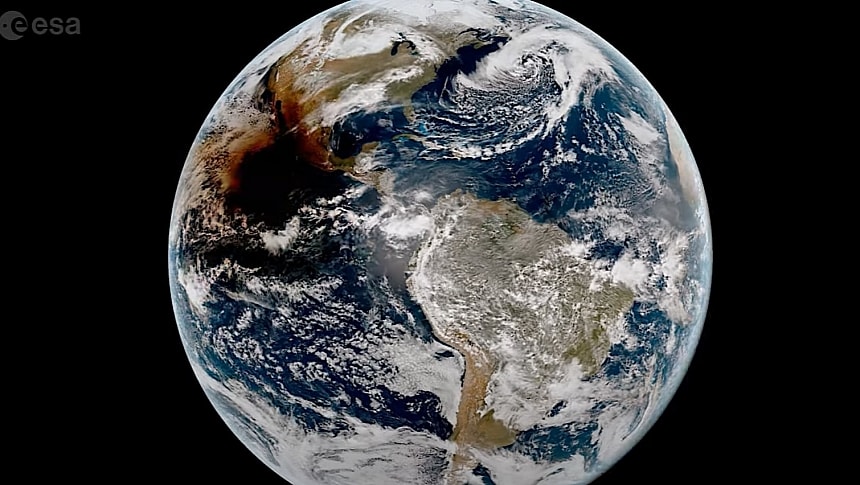Monday, April 8, will forever remain in history as the day when large chunks of North America plunged into darkness in the middle of the day. A natural occurrence, but rare and spectacular nonetheless, witnessed firsthand by around 32 million people.
You all know how eclipses work: every now and then the Moon positions itself in such a way as to perfectly block the light of the Sun from reaching our planet’s surface. If we’re lucky, it blocks it in just the right way for us to experience eclipses from the comfort of our cities.
Yesterday eclipse reached totality (meaning a complete block of the Sun, except for a visible ring of light) on a stretch of land going from Mexico to the eastern tip of Canada. People living in these regions were treated to a celestial spectacle North America won't see again until the middle of the century.
Seen from Earth, the event was impressive enough, but have you ever wondered what such a thing looks like from space? Believe it or not, it’s even more spectacular.
People working in space exploration know this, and that’s why they pointed a number of satellites orbiting our world at distances of 22,370 miles (36,000 km) directly at our planet to see what they can capture. Among those satellites were the Copernicus Sentinel-3 and the Geostationary Operational Environmental Satellite (GOES-16).
The latter is a space tool normally used by the National Oceanic and Atmospheric Administration (NOAA) and NASA to take continuous images of our world and make both atmospheric and space weather measurements. This time, it was tasked with giving us a taste of what a total solar eclipse looks like from space.
You can see the result in the video attached below this text, but you should be warned that what you are about to see is a bit unsettling.
Why is that? You all know what a shadow moving across the surface of another object looks like. That’s exactly what we have here, but at a scale that is kind of spooky.
GOES-16 captured the massive shadow of the Moon moving across the face of the planet from southwest to northeast, casting large patch of darkness across the globe, with hints of reddish light on its edges. What you’re looking at is a timelapse of the event as it unfolded from approximately 16:00 to 23:00 CEST.
The mission of this distant satellite was not solely to delight us with a view of the eclipse from space. Because its main goal is to study the atmosphere of our planet, the drop in temperatures and effects of the eclipse on cloud formations can be easily extracted from these observations. We’ll probably have to wait a while longer before that happens, though.
Yesterday eclipse reached totality (meaning a complete block of the Sun, except for a visible ring of light) on a stretch of land going from Mexico to the eastern tip of Canada. People living in these regions were treated to a celestial spectacle North America won't see again until the middle of the century.
Seen from Earth, the event was impressive enough, but have you ever wondered what such a thing looks like from space? Believe it or not, it’s even more spectacular.
People working in space exploration know this, and that’s why they pointed a number of satellites orbiting our world at distances of 22,370 miles (36,000 km) directly at our planet to see what they can capture. Among those satellites were the Copernicus Sentinel-3 and the Geostationary Operational Environmental Satellite (GOES-16).
The latter is a space tool normally used by the National Oceanic and Atmospheric Administration (NOAA) and NASA to take continuous images of our world and make both atmospheric and space weather measurements. This time, it was tasked with giving us a taste of what a total solar eclipse looks like from space.
You can see the result in the video attached below this text, but you should be warned that what you are about to see is a bit unsettling.
Why is that? You all know what a shadow moving across the surface of another object looks like. That’s exactly what we have here, but at a scale that is kind of spooky.
GOES-16 captured the massive shadow of the Moon moving across the face of the planet from southwest to northeast, casting large patch of darkness across the globe, with hints of reddish light on its edges. What you’re looking at is a timelapse of the event as it unfolded from approximately 16:00 to 23:00 CEST.
The mission of this distant satellite was not solely to delight us with a view of the eclipse from space. Because its main goal is to study the atmosphere of our planet, the drop in temperatures and effects of the eclipse on cloud formations can be easily extracted from these observations. We’ll probably have to wait a while longer before that happens, though.







